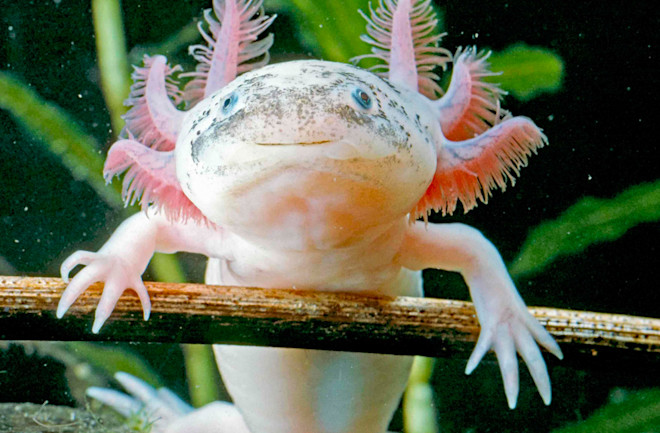Plants For Axolotl
Axolotls are fascinating aquatic creatures that require proper care to thrive. One important aspect of their care is providing them with the right plants in their tank. Plants not only provide aesthetic value but also contribute to the axolotls' health and well-being. In this article, we will dive into the world of plants for axolotl, discussing their benefits, which plants are safe to use, and how to properly care for them.
Pain Points Related to Plants for Axolotl
One of the common issues that axolotl owners face is finding suitable plants for their tank. Not all plants are safe for axolotls as some may harm or even kill them. Additionally, some plants require specific lighting and temperature conditions that may not be suitable for axolotls. Furthermore, some plants can quickly overgrow and take over the tank, leading to an unsightly and unhealthy environment for the axolotls.
The Target of Plants for Axolotl
The goal of adding plants to the axolotl tank is to create a natural and stimulating environment for the axolotls that mimic their natural habitat. The right plants can help to regulate the tank's water quality, provide hiding spots and shade for axolotls, and reduce stress levels.
Summary of Main Points for Plants for Axolotl and Related Keywords
In summary, choosing the right plants for axolotl requires research to ensure that they are safe, suitable for the tank's conditions, and contribute to the axolotls' health and happiness. Finding a balance between function and beauty is essential for a successful planted axolotl tank.
Best Plants for Axolotl Tank
One of the best plants for an axolotl tank is Java fern. Java fern is a hardy and easy-to-care-for plant that does not require substrate or high lighting. It does well in a range of temperatures and water conditions, making it ideal for axolotl's tank. Additionally, Java fern provides excellent hiding spots and shade for axolotls. Another great plant is water lettuce, which provides a natural filtration system, helps to regulate the water quality, and also serves as food for axolotls.

How to Properly Care for Axolotl Plants
Proper care is essential to keep axolotl plants healthy and thriving. First, ensure that the plants are safe for axolotls by researching their toxicity levels. Second, maintain the water quality by performing regular water changes and monitoring the pH levels. Third, provide adequate lighting and temperature conditions for the plants to thrive. Fourth, prune and trim the plants regularly to prevent overgrowth, which can lead to an unsightly and unhealthy environment for the axolotls.
Benefits of Plants for Axolotl
Adding plants to an axolotl's tank provides several benefits, including:
- Regulating the water quality by absorbing harmful chemicals
- Providing natural filtration and oxygenation
- Reducing stress levels by providing hiding spots and shade
- Enhancing the tank's aesthetic value
Tips for Choosing Axolotl-Safe Plants
When choosing plants for axolotl, it is essential to research their safety and toxicity levels. Some of the safe plants for axolotls include Java fern, Marimo moss balls, anubias, and hornwort. Plants that are not safe for axolotls include lilies, tulips, daffodils, and other plants that may contain harmful chemicals that can poison the axolotls.
Question and Answer
Q: Can axolotls eat plants in their tank?
A: Yes, axolotls can safely consume some plants in their tank, such as water lettuce and duckweed. However, care must be taken not to overfeed them as plants should not form the primary part of their diet.
Q: How often do I need to prune axolotl plants?
A: It is essential to prune axolotl plants regularly to prevent overgrowth and create a healthy and attractive environment. However, the frequency of pruning will depend on the specific plant's growth rate and the size of the tank.
Q: Can I use artificial plants in my axolotl tank?
A: Yes, artificial plants can be used in an axolotl tank with proper care. They provide an aesthetic value similar to live plants without the maintenance requirements. However, it is essential to choose artificial plants that are soft and do not have sharp edges, as axolotls' delicate skin can be easily damaged.
Q: Do axolotls need plants in their tanks?
A: While plants are not essential for axolotls, they provide several benefits, including improving the water quality, reducing stress levels, and providing hiding spots. Therefore, adding plants to the axolotl tank can contribute to their overall health and well-being.
Conclusion of Plants for Axolotl
In conclusion, choosing the right plants for an axolotl tank requires careful consideration of safety, suitability, and maintenance requirements. A planted axolotl tank can provide many benefits, including regulation of water quality, stress reduction, and aesthetic appeal. By following the tips and information provided in this article, axolotl owners can create a healthy and stimulating environment for their aquatic pets.
Gallery
Axolotl In Planted Aquarium. Lots Of Soft Plants Is Great For The

Photo Credit by: bing.com / axolotl aquariums setup vivarium aqurium betta terrarium aquariumaccessories habitats
Best Axolotl Plants To Greenscape Your Tank | Exotic PetQuarters

Photo Credit by: bing.com / axolotl aquarium acuario abono greenscape fertilizantes
10 Best Plants For Axolotls - Planted Axolotl Tank - Axolotl Nerd

Photo Credit by: bing.com / axolotl axolotls tank
Axolotl | San Diego Zoo Animals & Plants

Photo Credit by: bing.com / axolotl endangered fish habitats
What The Axolotl's Limb-Regenerating Capabilities Have To Teach Us

Photo Credit by: bing.com / axolotl axolotls limb regenerating teach worms gills handy limbs